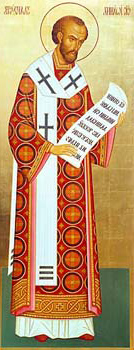|
박희춘 목사
(Homepage) |
2018-08-19 05:50:07, 조회 : 6,652, 추천 : 934 |
- SiteLink #1 : https://plato.stanford.edu/entries/postmodernism/#8

이 아티클안에
postmodern rhetoric and aesthetic 에 대한 항목(8)이 나옵니다
아주 좋은 자료입니다 (링크1)
1. Precursors
2. The Postmodern Condition
3. Genealogy and Subjectivity
4. Productive Difference
5. Deconstruction
6. Hyperreality
7. Postmodern Hermeneutics
8. Postmodern Rhetoric and Aesthetics
9. Habermas's Critique
----------------------------------------------
8. Postmodern Rhetoric and Aesthetics
Rhetoric and aesthetics pertain to the sharing of experience through activities of participation and imitation. In the postmodern sense, such activities involve sharing or participating in differences that have opened between the old and the new, the natural and the artificial, or even between life and death. The leading exponent of this line of postmodern thought is Mario Perniola. Like Vattimo, Perniola insists that postmodern philosophy must not break with the legacies of modernity in science and politics. As he says in Enigmas, “the relationship between thought and reality that the Enlightenment, idealism, and Marxism have embodied must not be broken” (Perniola 1995, 43). However, he does not base this continuity upon an internal essence, spirit, or meaning, but upon the continuing effects of modernity in the world. One such effect, visible in art and in the relation between art and society, is the collapse of the past and future into the present, which he characterizes as “Egyptian” or “baroque” in nature. This temporal effect is accomplished through the collapse of the difference between humans and things, where “humans are becoming more similar to things, and equally, the inorganic world, thanks to electronic technology, seems to be taking over the human role in the perception of events” (Perniola 1995, viii). This amounts to a kind of “Egyptianism,” as described by Hegel in his Aesthetics (see Hegel 1823–9, 347-361), where the spiritual and the natural are mixed to such a degree that they cannot be separated, as, for example, in the figure of the Sphinx. However, in the postmodern world the inorganic is not natural, but already artificial, insofar as our perceptions are mediated by technological operations.
Likewise, says Perniola, art collections in modern museums produce a “baroque effect,” where “The field that is opened up by a collection is not that of cultivated public opinion, nor of social participation, but a space that attracts precisely because it cannot be controlled or possessed” (Perniola 1995, 87). That is, in the collection, art is removed from its natural or historical context and creates a new sense of space and time, not reducible to linear history or any sense of origin. The collection, then, is emblematic of postmodern society, a moment of its “truth.” Furthermore, Perniola insists that baroque sensibility is characteristic of Italian society and culture in general. “The very idea of truth as something essentially naked,” he says, “is at loggerheads with the Baroque idea, so firmly rooted in Italy, that truth is something essentially clothed” (Perniola 1995, 145). This corresponds to a sensibility that is intermediate between internal feelings and external things. “The Italian enigma,” he says, “lies in the fact that the human component is equipped with an external emotionality that does not belong to him or her intimately, but in which they nonetheless participate” (Perniola 1995, 145). To account for this enigmatic experience, the philosopher must become “the intermediary, the passage, the transit to something different and foreign” (Perniola 1995, 40). Hence, philosophical reading and writing are not activities of an identical subject, but processes of mediation and indeterminacy between self and other, and philosophical narrative is an overcoming of their differences.
These differences cannot be overcome, in Hegelian fashion, by canceling them under a higher-order synthesis, but must be eroded or defaced in the course of traversing them. In Ritual Thinking, Perniola illustrates this process through the concepts of transit, the simulacrum, and ritual without myth. Transit derives from a sense of the simultaneity of the present, where we are suspended in a state of temporariness and indeterminacy, and move “from the same to the same”; the simulacrum is the result of an endless mimesis in which there are only copies of copies without reference to an original; and ritual without myth is the repetition of patterns of action having no connection to the inner life of a subject or of society. Thus Perniola sees social and political interaction as repetitive patterns of action having no inherent meaning but constituting, nonetheless, an intermediary realm where oppositions, particularly life and death, are overcome in a to-and-fro movement within their space of difference.
To illustrate these concepts Perniola refers to practices associated with Romanism, particularly Roman religion. “Ritual without myth,” he says, “is the very essence of Romanism” (Perniola 2001, 81). It is a passage between life and death via their mutual simulation, for example, in the labyrinthine movements of the ritual known as the troiae lusus. These movements, he says, mediate between life and death by reversing their pattern of natural succession, and mediate their difference through actions having no intrinsic meaning. Unlike Vattimo's project of constructing meaning to overcome historical differences, Perniola's concept of transit into the space of difference is one of “art” in the sense of artifice or technique, and is not aimed at a synthesis or unification of opposing elements. In this respect, Perniola has an affinity with the French postmodernists, who emphasize functional repetition over the creation of meaning. However, as Perniola's notion of ritual without myth illustrates, the functional repetitions of social interaction and technology do not disseminate differences, but efface them. This is clear in his account of the ritualized passage between life and death, as compared with Baudrillard, who calls for strategies introducing the irreversibility of death into the system of symbolic exchange. In this respect, Perniola's postmodernism is strongly aesthetic, and remains, with Vattimo, in the aesthetic and historical dimensions of experience.
|
|
|

